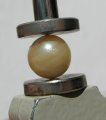N
nlerner
Guest
Hi Zeide,
I said "three POSSIBLE sources".
As to the name Perucke, they had in mind the roccoco style of wigs (Mozart).
Art Nouveau has nothing to do with it.
nora
I said "three POSSIBLE sources".
As to the name Perucke, they had in mind the roccoco style of wigs (Mozart).
Art Nouveau has nothing to do with it.
nora

![Gema (3) [%P].JPG](/data/attachments/1/1081-bea35069e2a6aa8d32e949429d4c916e.jpg?hash=vqNQaeKmqo)
